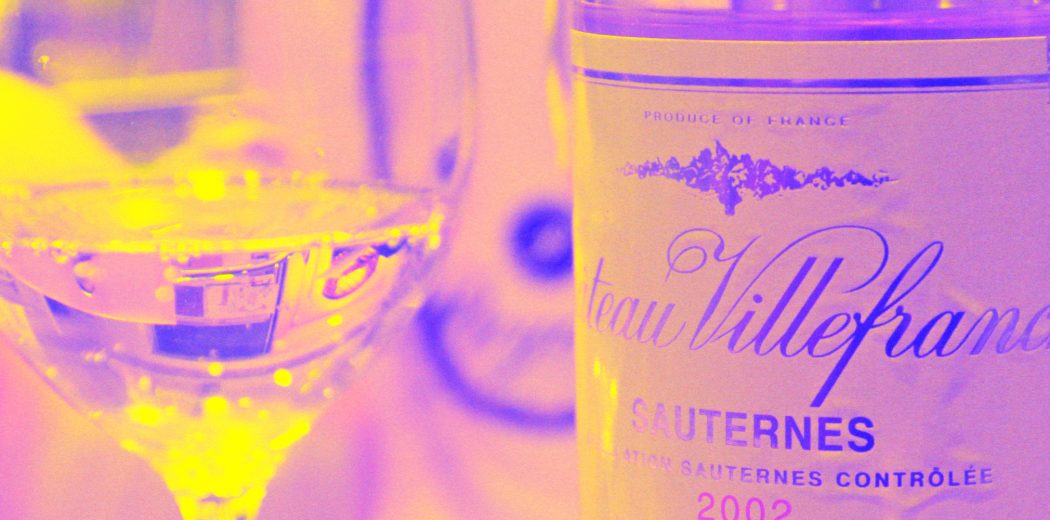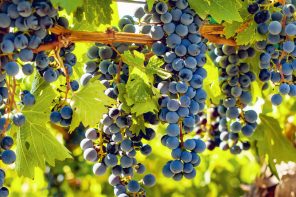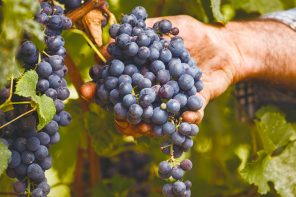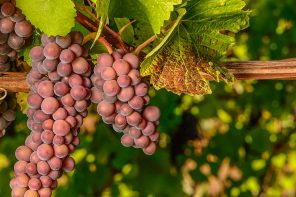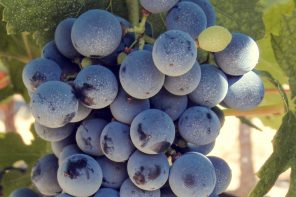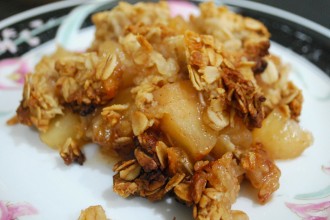Like liquid gold, it glistens in your glass. Honey and peach, apricot, ginger, maybe a touch of marmalade. Every time you go in for a sip, new flavors unfold across your palate. There’s only one thing it could be: Sauternes.
Bordeaux is the home to this ambrosial wine, and five communes make up the Sauternes appellation: Sauternes, Barsac, Bommes, Fargues and Preignac. The region is nestled between the Garonne and its tributary the Ciron. The appellation’s proximity to these two rivers is key in creating the ideal conditions for the botrytis cinerea fungus (noble rot) to take hold. In years when all the weather conditions are met, ordinary grapes are transformed into the vessels from which the nectar Sauternes is born.
There are three grapes used in Sauternes: Sauvignon Blanc, Sémillon, and occasionally, Muscadelle. Like red Bordeaux, this wine is virtually always produced as a blend. Each grape adds a little something. Sauvignon Blanc brings a hefty dose of acidity, an absolute necessity to create balance in a sweet wine. Meanwhile, Sémillon is ideal for noble rot. Its thin skin is easy for botrytis spores to penetrate and begin the process of dehydration, thus concentrating the sugars, acids and other flavor compounds within the grape berries. As for Muscadelle? Think of it as a seasoning; it adds a floral perfume to the picture.
Noble rot wines are first believed to have appeared in France during the mid-17th century, at the height of the Dutch presence in Bordeaux. Initially, the idea of using rotted grapes may have led Sauternais winemakers to keep the practice under wraps, so the exact date falls into a gray area. But within a century, that all changed. Creating wine from botrytis-infected grapes lost its ick factor and bottles of this precious liquid became highly sought-after. Even Thomas Jefferson was a fan.
The weather needs the perfect combination of humidity and dry, warm, rain-free days for botrytis to develop. Rain during harvest can lead to rot, and rot means no Sauternes. Once the grapes have shriveled on the vine, workers carefully make their way between the vine rows, and with eagle-eye precision, select only botrytis-affected grapes. They’ll make a few passes (called tries in French) through the vineyards. No machine harvesting here.
Once pressed and fermented, the wine is typically aged in oak barrels. Thanks to the harmony between high sugar levels, acid and a little boost from oak aging, Sauternes is capable of improving for decades after bottling.
For all its accolades, winemaking here is still a challenge. Frost can be a problem in spring and a rainy harvest can lead to rot and mold-infected berries, effectively ruining a vintage. In these cases, producers will opt not to make Sauternes, instead using their healthy grapes for use in dry white Bordeaux AOC wines.
The laborious task of selective harvesting, use of oak, along with the factors surrounding whether or not botrytis will take hold, drive up the cost of Sauternes. And Sauternes can certainly be expensive. Then, of course, there is also the prestige factor. Like Bordeaux, several of Sauternes estates were classified into different crus level in 1855. There is one Premier Cru Supérieur, the legendary Chateau d’Yquem, which stands above the rest. Over 20 other chateaux fall into the other two categories, Premier Cru Classés and Deuxièmes Crus Classés.
Pairings vary with Sauternes, but the equally decadent foie gras is an absolute classic. Pâtés and terrines are just as tasty. Dessert-wise, fruit-based desserts, many cheesecakes and just plain cheese make Sauternes sing. Salty blue cheeses work beautifully with this luscious drink – the interplay of salt and sweet on your palate is pure magic. On the topic of salty, savory eats, Sauternes is fantastic with spicy Asian and some Latin dishes where all that lovely sweetness helps temper the fire of even the hottest chiles.
Along with the likes of Tokaji, Sauternes ranks amongst the very best dessert wine in the world. With its complex flavors and aromas and incredible ability to age, it’s definitely something to start getting into, especially if you’ve got a sweet tooth.

